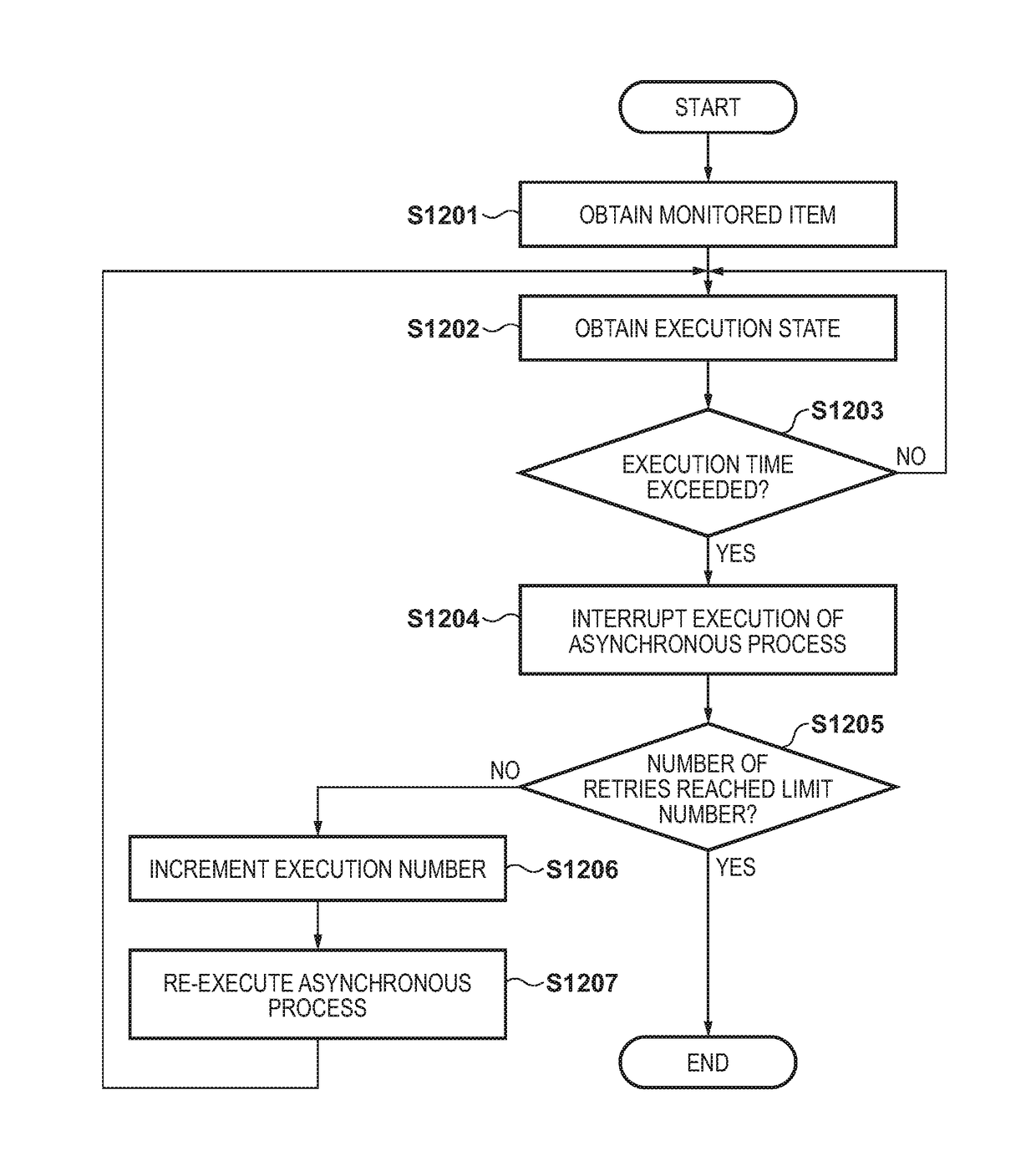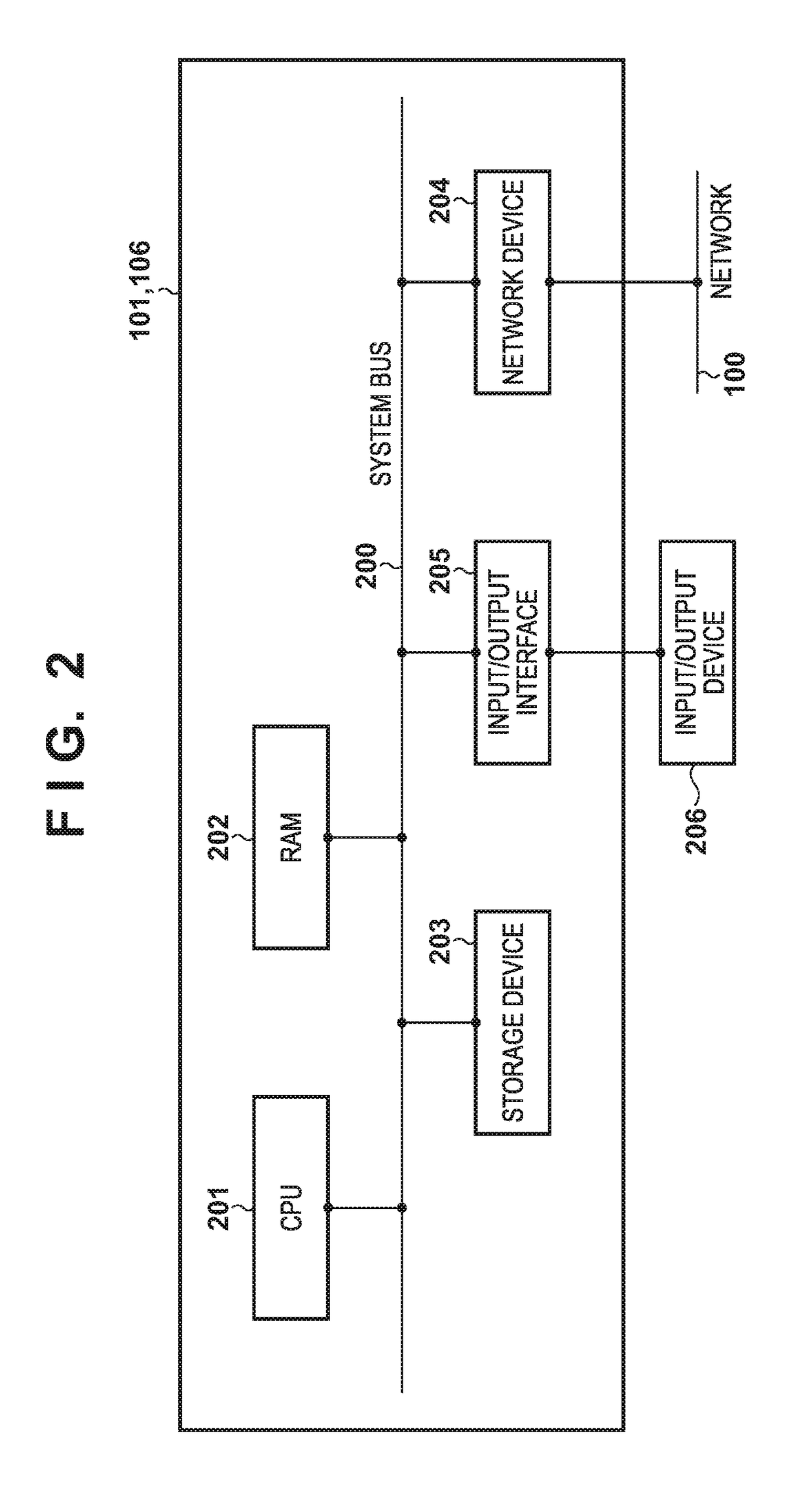Non-transitory computer-readable medium, system, and information processing method
a computer-readable medium and non-transitory technology, applied in the direction of program control, multi-programming arrangements, instruments, etc., can solve the problems of processing failure risk, event-driven computing service not being started, and the limit of the number of events that can be processed simultaneously by a single account, so as to reduce the risk of processing failure
- Summary
- Abstract
- Description
- Claims
- Application Information
AI Technical Summary
Benefits of technology
Problems solved by technology
Method used
Image
Examples
first embodiment
[0036]System Configuration
[0037]Hereinafter, embodiments of the invention will be described with reference to the drawings. FIG. 1 is a block diagram illustrating the overall configuration of a system according to the invention. A network 100 is a network connecting the constituent elements in the block diagram of FIG. 1, namely a client device 101, a file server 102, a file information management server 103, an event information management server 104, a file storage location management server 105, and an administrator device 106. The client device and servers, administrator devices, and so on may also be referred to as “information processing apparatuses” or “computers”. The system illustrated in FIG. 1 may be referred to as a “cloud system” or an “information processing system”.
[0038]The network 100 is a framework through which the constituent elements communicate with each other. In this embodiment, the client device 101 will be described as being connected to the other constitue...
second embodiment
[0134]The first embodiment describes an example in which the file storage location management server 105 is used to set different storage locations for log files and the statistics information file, and event processing is carried out only for the statistics information file. However, there are cases where the client device information transmission application 400 has a predetermined storage location, and cases where the same storage location is specified even if an inquiry is made to the file storage location management server 105. Accordingly, this embodiment will describe a processing method that suppresses concurrent execution of asynchronous process code to the greatest extent possible even in cases where file storage locations are the same. Hereinafter, in this embodiment, it is assumed that the processing is carried out using the following settings, conditions, and so on. Table 18 shows an example of the file storage location management table according to this embodiment.
TABL...
third embodiment
[0145]As illustrated in FIG. 12, the asynchronous process code execution environment management unit 714 monitors the execution time of each instance of asynchronous process code executed in the asynchronous process code execution environment 720. When the processing is not completed within the set amount of time, a timeout error occurs, and the execution of asynchronous process code is interrupted. In the first or second embodiment, there is a problem in that the process for updating the information in the file information management server 103 cannot be carried out unless it can be confirmed that all of the associated log files have arrived before the asynchronous process code “FuncA” or “FuncB” times out. This embodiment describes a method for extending the total processing time of the asynchronous process code to a desired amount of time in order to solve this problem. Hereinafter, in this embodiment, it is assumed that the processing is carried out using the following settings,...
PUM
 Login to View More
Login to View More Abstract
Description
Claims
Application Information
 Login to View More
Login to View More - R&D
- Intellectual Property
- Life Sciences
- Materials
- Tech Scout
- Unparalleled Data Quality
- Higher Quality Content
- 60% Fewer Hallucinations
Browse by: Latest US Patents, China's latest patents, Technical Efficacy Thesaurus, Application Domain, Technology Topic, Popular Technical Reports.
© 2025 PatSnap. All rights reserved.Legal|Privacy policy|Modern Slavery Act Transparency Statement|Sitemap|About US| Contact US: help@patsnap.com



